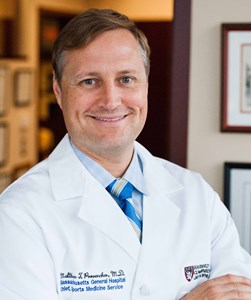Shoulder Surgeon

Are you experiencing chronic shoulder pain that is reducing your range of motion? If so, you may be a candidate for shoulder joint resurfacing. This is a less invasive surgical treatment option for patients suffering with shoulder arthritis. Complex shoulder surgeon, Dr. Matthew Provencher provides diagnosis and determines the best treatment options for patients in Vail, Aspen, Colorado Springs, and the Denver, Colorado area who are experiencing chronic shoulder pain. Contact Dr. Provencher’s team today!
What is shoulder arthritis?
The head of the humerus (upper arm bone) joins with the glenoid socket of the scapula (shoulder blade) to form the glenohumeral joint, one of three synovial shoulder joints. Surrounding the ends of these bones is a slippery white connective tissue that enables them to painlessly glide over one another with joint movement. Damage to this articular cartilage causing bone-on-bone movement is a condition known as shoulder arthritis. There are four types of arthritis classified by the specific means of cartilage impairment: osteoarthritis, rheumatoid arthritis, rotator cuff arthropathy, and post-traumatic arthritis. Chronic shoulder pain, joint damage, and, in some cases, loss of movement, can result when shoulder arthritis is left untreated.
What is the treatment for shoulder arthritis?
Conservative therapies may be beneficial in individuals with mild to moderate shoulder pain as a result of degenerative joint disease. Pain and inflammation can be managed with a combination of rest, alternating heat and ice application, and non-steroidal anti-inflammatory medications (NSAIDs). If these symptoms still persist, a corticosteroid injection administered directly into the shoulder may be beneficial. When appropriate, a physical rehabilitation program will be prescribed to improve shoulder strength and range of motion.
However, in the event of unsuccessful conservative therapy, or when individuals experience severe shoulder pain and stiffness from shoulder arthritis, surgical intervention may be necessary to restore strength, function, and range of motion of the shoulder. Traditionally, a total shoulder replacement, also called shoulder arthroplasty, was the recommended surgical treatment, but technological advancements resulted in the development of shoulder joint resurfacing. This surgical technique involves removing only the diseased portion of the shoulder joint rather than replacing the entire joint. Several key factors, such as the patient’s age, medical history, and desired outcome, will be evaluated to determine if shoulder joint resurfacing is an appropriate treatment option. Dr. Matthew T. Provencher, orthopedic shoulder doctor, treats patients in Vail, Aspen, Colorado Springs, and the Denver, Colorado area who have experienced shoulder arthritis and are in need of surgical repair.
What are the advantages of shoulder joint resurfacing?
For the ideal candidates, Dr. Provencher favors shoulder joint resurfacing over shoulder arthroplasty. More of the natural tissue is retained with shoulder joint resurfacing while also being less invasive, less traumatic, and more effective than the traditional total shoulder replacement. The native anatomy is also restored with shoulder joint resurfacing which often results in a greater range of motion. Shoulder joint resurfacing poses no risk of a fracture near the tip of the bone or a fat embolus and can also be performed in patients with bone deformities. Additionally, there is no extensive rehabilitation process with shoulder joint resurfacing.
Shoulder joint resurfacing can be performed on either the humeral head or the glenoid socket of the scapula. With humeral head repair, specialized surgical instruments excise and remove the injured portions of the humeral head leaving the majority of the humeral head intact. The humeral head is then prepared to receive the hemispheric and metallic surface implant. With glenoid socket repair, the native humeral head is replaced with a metal prosthesis and a surgical tool, known as a reamer, reshapes the diseased glenoid cavity to fit the new metal prosthesis.
How is shoulder joint resurfacing performed?
Although shoulder joint resurfacing is a less invasive and less traumatic procedure than the traditional shoulder arthroplasty, at least one overnight hospital stay is still typically required. Prior to starting, the patient is placed under either local or general anesthesia and arranged into a beach chair position. When stable and situated, Dr. Provencher creates an incision on the anterior (front) shoulder providing access to the entire shoulder joint.
What is the recovery period like after shoulder joint resurfacing?
After successful shoulder joint resurfacing, patients in the Vail, Aspen, Colorado Springs, and the Denver, Colorado area can expect a return to normal daily activities in approximately 6 weeks. Patients can also anticipate the following:
- Joint immobilization and movement. The shoulder will be immobilized with a sling or other device immediately following surgery. Although shoulder movement is recommended as soon after surgery as possible, heavy lifting is discouraged during the early stages of recovery to prevent further shoulder joint damage.
- A combination of rest, ice, and non-steroidal anti-inflammatory medications (NSAIDs) can be used for pain and inflammation management. If necessary, a stronger pain medication can be prescribed by Dr. Provencher to be taken as directed.
- Active participation and completion of the designated physical rehabilitation program is vital for a successful recovery following shoulder joint resurfacing. The physical therapy program will focus on strengthening and improving mobility of the shoulder muscles.
For more information on shoulder joint resurfacing, or to discuss your shoulder arthritis treatment options, please contact the office of Matthew T. Provencher, MD, orthopedic shoulder doctor at The Steadman Clinic, serving Vail, Aspen, Colorado Springs, and the Denver, Colorado area.
